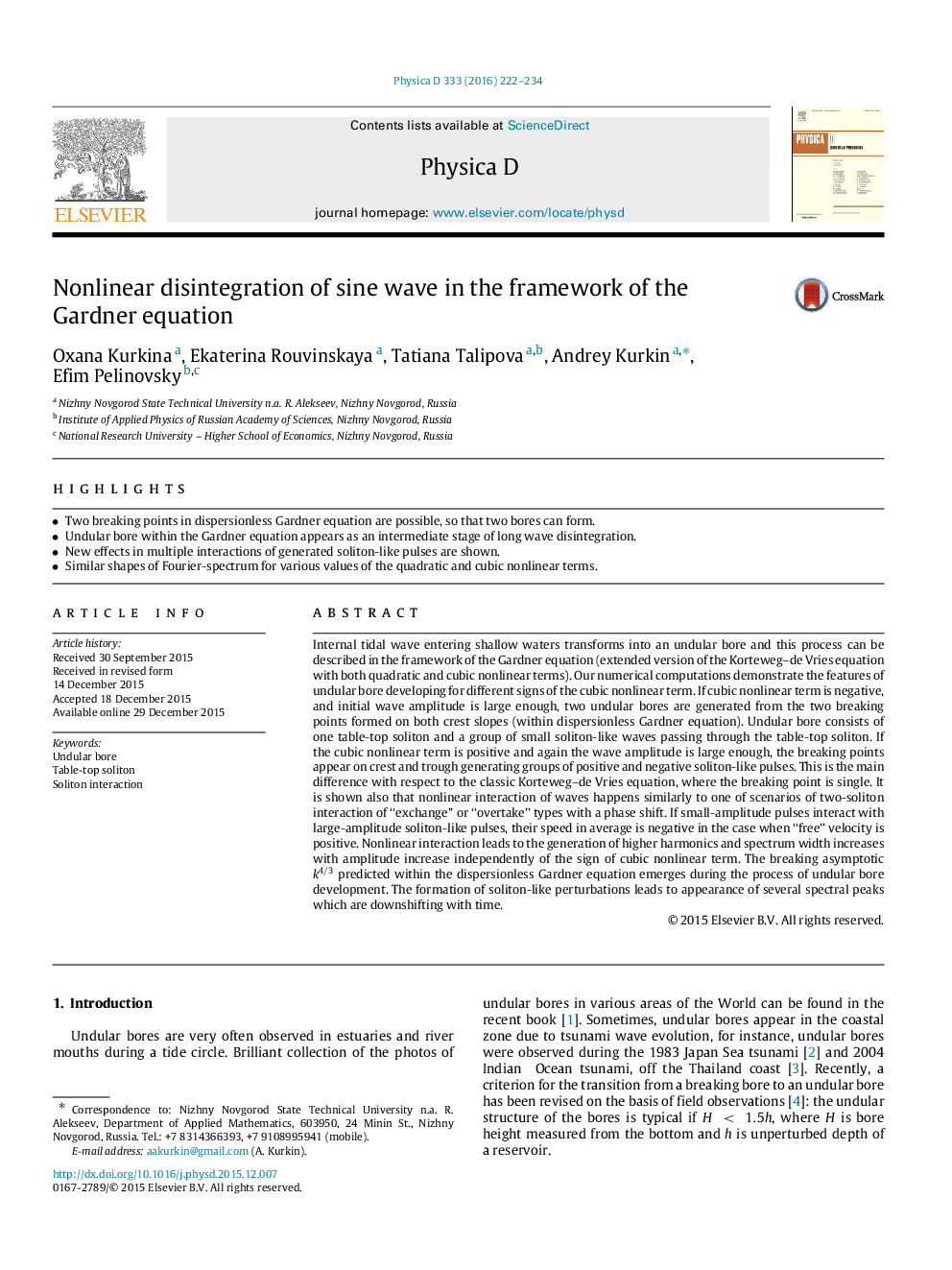| Article ID | Journal | Published Year | Pages | File Type |
|---|---|---|---|---|
| 8256335 | Physica D: Nonlinear Phenomena | 2016 | 13 Pages |
Abstract
Internal tidal wave entering shallow waters transforms into an undular bore and this process can be described in the framework of the Gardner equation (extended version of the Korteweg-de Vries equation with both quadratic and cubic nonlinear terms). Our numerical computations demonstrate the features of undular bore developing for different signs of the cubic nonlinear term. If cubic nonlinear term is negative, and initial wave amplitude is large enough, two undular bores are generated from the two breaking points formed on both crest slopes (within dispersionless Gardner equation). Undular bore consists of one table-top soliton and a group of small soliton-like waves passing through the table-top soliton. If the cubic nonlinear term is positive and again the wave amplitude is large enough, the breaking points appear on crest and trough generating groups of positive and negative soliton-like pulses. This is the main difference with respect to the classic Korteweg-de Vries equation, where the breaking point is single. It is shown also that nonlinear interaction of waves happens similarly to one of scenarios of two-soliton interaction of “exchange” or “overtake” types with a phase shift. If small-amplitude pulses interact with large-amplitude soliton-like pulses, their speed in average is negative in the case when “free” velocity is positive. Nonlinear interaction leads to the generation of higher harmonics and spectrum width increases with amplitude increase independently of the sign of cubic nonlinear term. The breaking asymptotic k4/3 predicted within the dispersionless Gardner equation emerges during the process of undular bore development. The formation of soliton-like perturbations leads to appearance of several spectral peaks which are downshifting with time.
Keywords
Related Topics
Physical Sciences and Engineering
Mathematics
Applied Mathematics
Authors
Oxana Kurkina, Ekaterina Rouvinskaya, Tatiana Talipova, Andrey Kurkin, Efim Pelinovsky,
